9 Asymmetric and Subdivided Meters
Lesley Mann
Learning Objectives
In this chapter, students will:
- Learn, practice, and conduct common asymmetrical meter patterns (5, 7, etc)
- Demonstrate effective decision making in applying the appropriate pattern to musical examples
What’s the meter?
In the video below, you’ll make an attempt to find the cyclical big beat, and then how many pulses are within that big beat (the measure), followed by how those subdivisions are grouped. Good luck!
Uncommon Meters
In this chapter, we’ll explore gesture patterns for meters outside the common simple (2, 3, and 4) and compound (6, 9, and 12) meters, most notably 5, 7, 8, 9, and 10. These time signatures require additional score analysis to determine the conducting pattern. First, you’ll decide whether to use a fast or slow pattern, as was discussed in the Compound Meter Chapter. This will primarily depend on tempo for gesture clarity. Next, analyze the music to discover where the strong beats lie. These two pieces of information will inform the decision making process for what gesture to use.
Fast Patterns
When the tempo is quick enough to choose a fast pattern, you’ll complete the same decision making process as described for slow subdivided patterns. Determine the number of beat groupings, and select a pattern based on that number. For example, 8/8 may be organized into three groups, such as (2+3+3). In this case, you’ll adopt a 3 pattern, but the first beat will be quicker than the last two. Rather than enlarging the physical space taken by the larger beat grouping, you will simply slow down the rebound to last for the full time of the beat grouping.
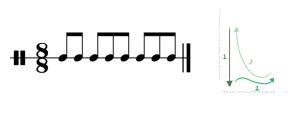
Fast 5 patterns
Fast 5 patterns will be grouped as (2+3) or (3+2). In both options, there are only two beat groupings, so a 2 pattern will be used.

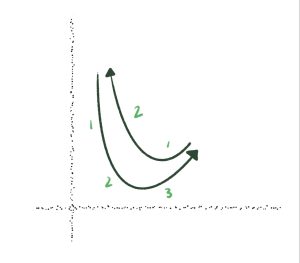


Slow Patterns
When you’ve determined that the tempo (or another compelling musical element) requires an ictus on each beat, you will use a slow pattern.
Slow 5 Patterns:
Just as in our common meters, the pattern will start and end with downward and upward motion, with the internal beats on the horizontal plane. Beat groupings will be illustrated through a gesture that makes a direction change across the midline on a strong beat.

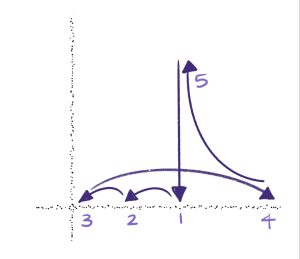
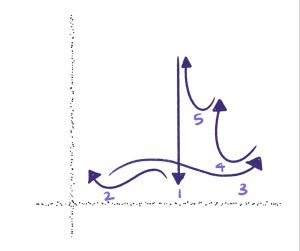
Slow 6 Patterns: Italian vs. German
Meters with 6 beats are most often subdivided into two groups of three. In this case, you’ll use the gesture pattern illustrated in the Compound Meter Chapter. This is known as the German 6 pattern.
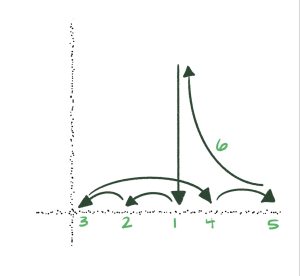
Sometimes, however, the music is organized into three groups of two. In this case, the Italian 6 pattern will be more appropriate. This pattern resembles a Christmas tree.
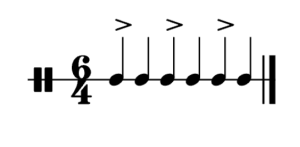
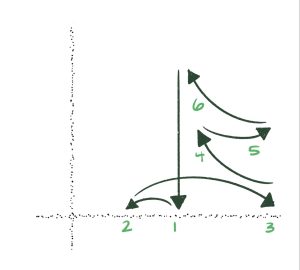
Additional Slow Options: Subdivided Patterns
As meters get larger than 6 beats, it becomes unwieldy to illustrate all the beats between down and up on the horizontal plane, as we would lose the ability to communicate strong and weak beats. Therefore, we begin to incorporate subdivided patterns. You’ve already experienced subdivided patterns; the slow patterns in the compound meter chapter included subdivided patterns. The 9 pattern is essentially a subdivided 3 pattern, and the 12 pattern is a subdivided 4 pattern. With asymmetrical meters, you’ll look for the beat groupings, determine how many beat groupings are in a measure, and use the number of beat groupings to determine your pattern.
For instance, a meter with 7 beats, grouped as (3+2+2), has 3 beat groupings, and therefore will use the skeleton of a 3 pattern.

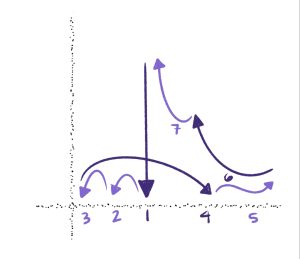
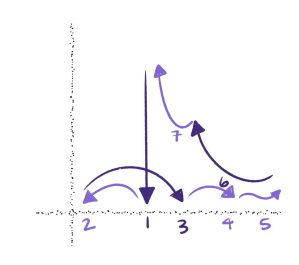
Marking the Score
In a piece of music with multiple meter changes in short order, many conductors find it useful to mark the score with symbols which act as a pattern shorthand. A vertical line can represent a two pattern, a triangle a 3 pattern, and a square a 4 pattern. Additionally, it’s helpful to include a quick beat grouping, such as (3+2+2) or (2+3).
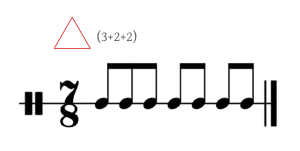
Walk through the steps in the following decision making process to determine what pattern to conduct:
Compound, Asymmetrical, and Subdivided Meter (CASM) Competency Check
Conduct the following excerpt with appropriate patterns, preps, cues, and releases.



